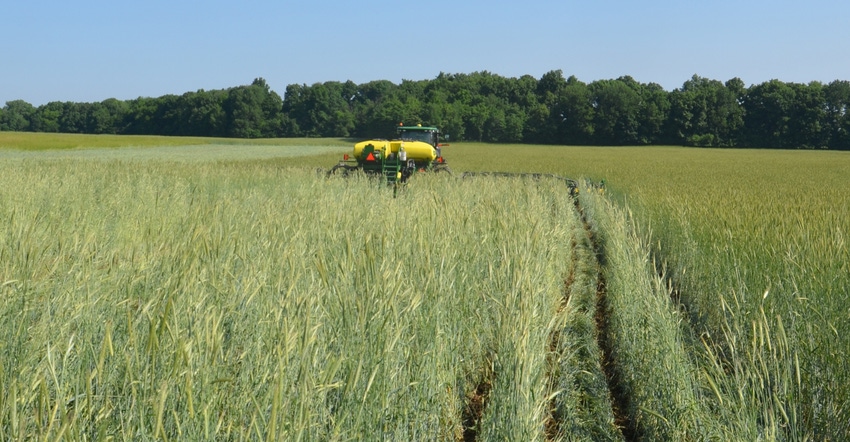August 14, 2018

By Don Donovan
Many cover crop species are excellent at accumulating available nitrogen in the soil and making it available for the next crop, but is it advantageous to apply supplemental N to the cover crop? After all, one of the goals of using cover crops is to reduce nutrient loss and possibly reduce commercial nutrient inputs. Is there value in spending additional money to apply commercial fertilizer to your cover crop in these times of narrow profit margins?
In many cases, cereal rye is either flown on in standing corn or seeded immediately after the corn is harvested, especially if soybeans are the next planned cash crop. If the corn has yields near the planned levels, much of the available nitrogen has been removed from the soil. Although cereal grains need N to thrive, there is still likely enough N left, and more will become available when residue starts to break down. However, the decision depends on your goals and other factors.
If water quality is a concern, don’t apply additional nitrogen. If water quality isn’t the major concern and you’re trying to improve soil organic matter levels with high-carbon cover crops, it’s important that they get off to a good start coming out of dormancy in the spring. An application of 20 to 30 pounds of N per acre may improve early spring growth, leading to more biomass and, therefore, improvements in soil organic matter levels.
Other nitrogen sources
If manure is available, it’s a smart move to put it where you will have or already have cover crops. Research indicates that cover crops can hold as much as 90% of the nutrients from manure applications. These nutrients will be stored and made available for future cash crops.
Never apply manure to frozen, snow-covered, ice-covered or saturated ground, even if a cover crop is in the field.
Another option is to include a legume such as crimson clover in your cover crop mix, even if you will not be planting corn as your next cash crop. The legume will produce easily available nitrogen that the grass cover crop can use. It will also provide diversity in your cover crop mix for microbiology in the soil.
Should manure not be available or you don’t wish to include a legume in your cover crop mix, you can easily get some nitrogen by applying the next year’s phosphorus needs in the fall near cereal rye seeding time. Both MAP, 11-52-0, and DAP, 18-46-0, include N with P. Only apply supplemental N after the cover crop has emerged to avoid excess fertility if conditions such as late planting date or dry weather keep the cover crop from emerging in the fall. Never apply fertilizer to frozen, snow-covered, ice-covered or saturated ground
Treat your cover crops like you treat your cash crops. Management practices such as seed selection, proper planting methods, timely planting and proper fertilization are critical for establishment and success of cover crop. You may want to consider supplemental fertilizer application as part of your cover crop management plan.
Donovan is a district conservationist with the Natural Resources Conservation Service in Parke County, Ind. He writes on behalf of the Indiana Conservation Partnership.
You May Also Like




